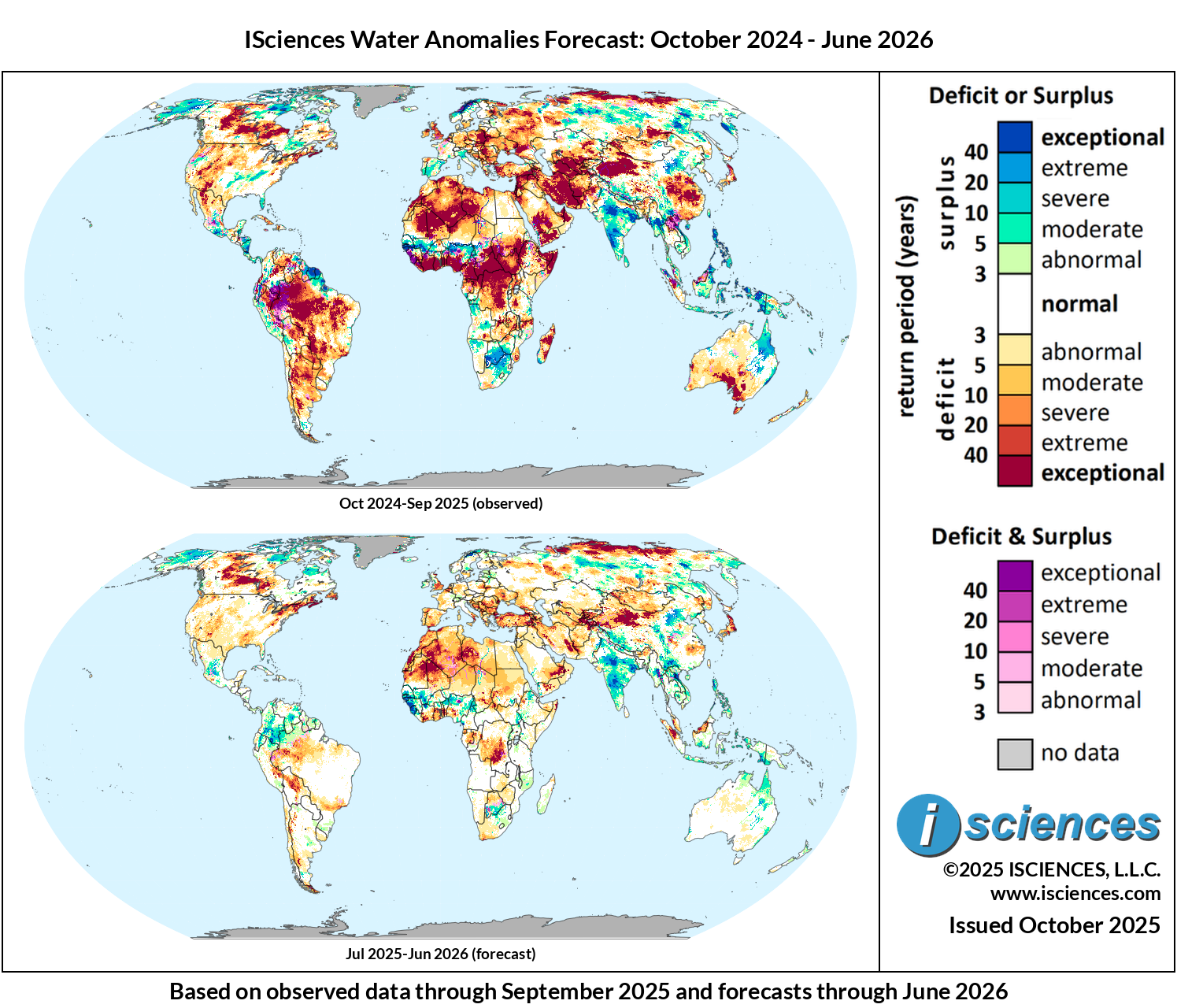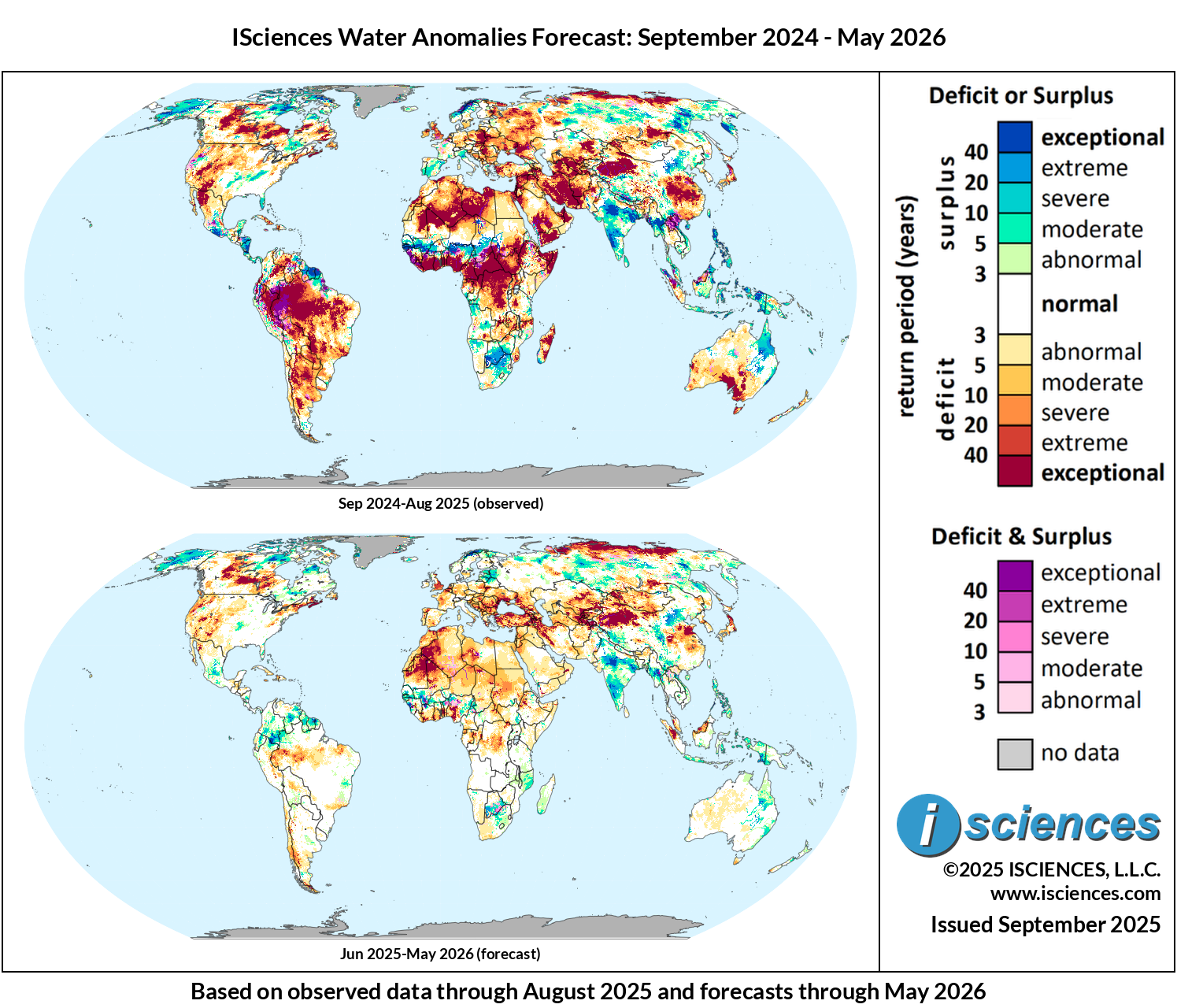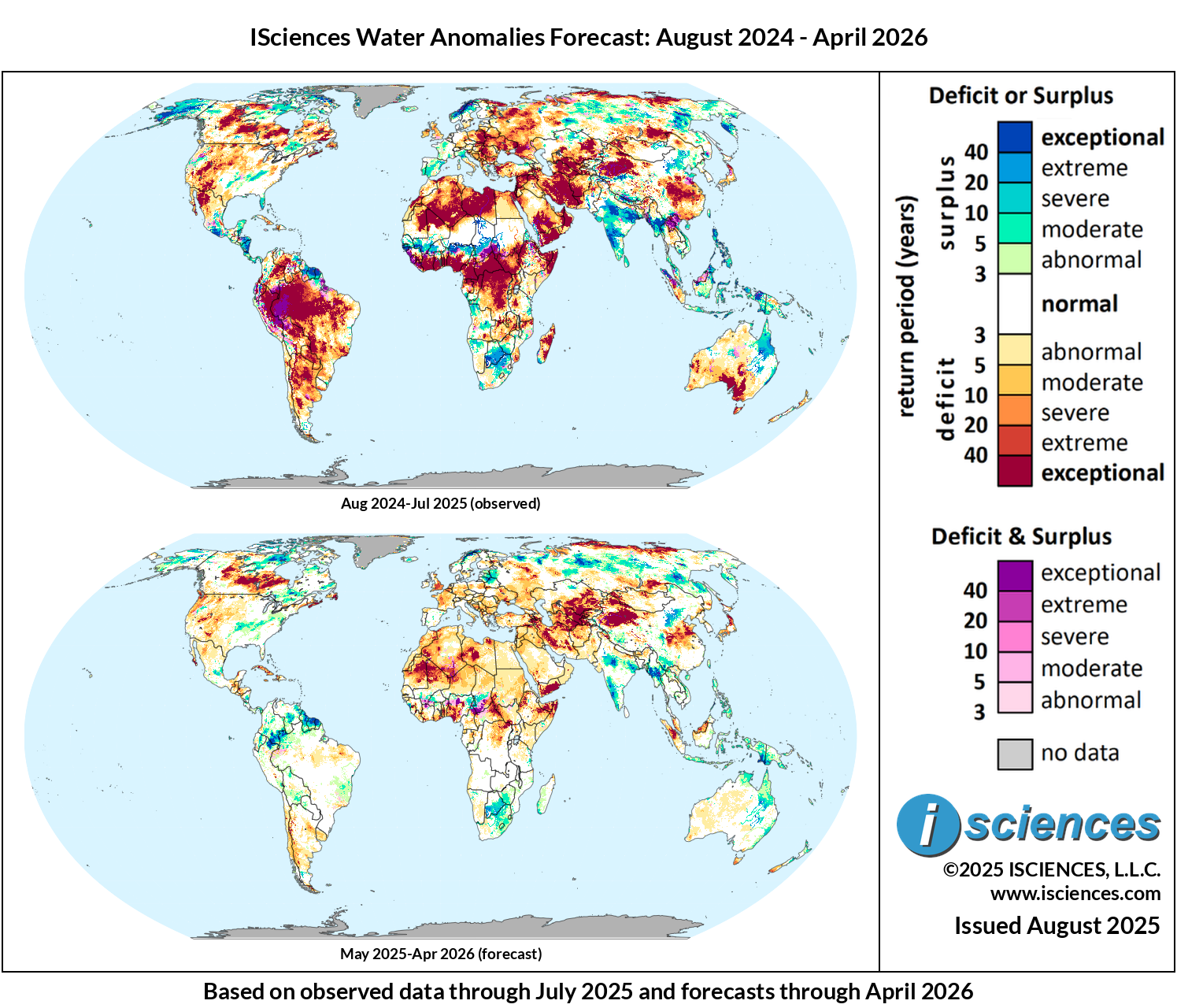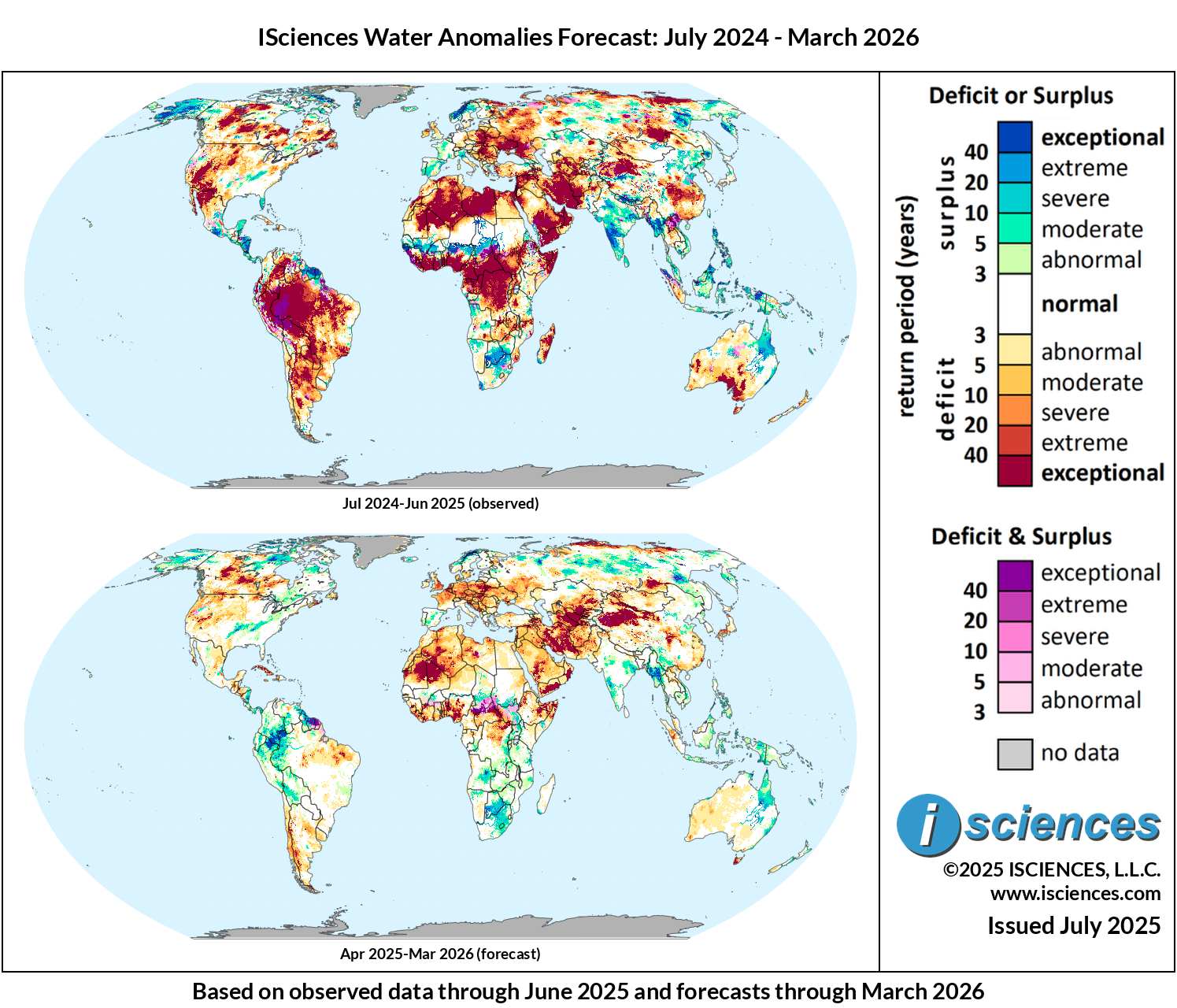
BLOG
We help you understand environmental and human security issues, impacts, vulnerability, indications and warnings.
Exceptional deficits are forecast for Canada, the Middle East, Central Asia, and northern China. Surpluses are forecast for Colombia, Peru, the Sahel, central India, and southern China.
Exceptional deficits are forecast for Canada, northeast United States, Central Asia, and the Middle East . Exceptional surpluses are forecast for India, portions of China, and the Philippines.
Exceptional deficits are forecast for Canada, northeast United States, southeast Europe, northwest Africa, Turkey, and northern Russia. Exceptional surpluses are forecast for west Africa, India, and northern Viet Nam.
Exceptional deficits are forecast for Canada, Europe, northwestern Africa, Central Asia, and China. Surpluses are forecast for northern South America, South Asia, and the the Philippines.
Exceptional deficits are forecast for Canada, northwestern Africa, the Sahel, and Central Asia. Surpluses are forecast for northern South America, Russia, South Asia, and the maritime Pacific.
Exceptional deficits are forecast for Europe, Central Asia, Iran, Iraq, and the Levant. Exceptional surpluses are expected in the northwest Amazon Basin and northern Sweden.
Severe to exceptional surpluses will remain throughout Queensland. Exceptional deficits will occur in portions of Victoria, Western Australia, Tasmania, and New Zealand.
Exceptional deficits will occur in northwestern and southeastern China, widespread throughout the Yangtze River Basin. Isolated pockets of surplus will affect portions of central and northeastern China.
Exceptional surpluses throughout Maritime Southeast Asia will mostly diminish, though pockets of severe to exceptional deficits will persist in portions of the Philippines, Indonesia, Papua, West Papua, and New Guinea.
Exceptional surpluses in India will mostly dissipate, transitioning to moderate to severe surpluses. Exceptional deficits will remain in Afghanistan and Pakistan.
Exceptional deficits will persist in regions east of Lake Baikal, northern coastal Russia, and regions of Central Asia and European Russia. Surpluses are expected to continue in isolated portions of northern Kazakhstan and central Russia.
Widespread exceptional deficits will significantly diminish in size, but remain in portions of Brazil and the Guianas. Severe to exceptional surpluses will emerge in portions of the Amazon Rainforest and the Bolivarian Nations.
Exceptional deficits will resolve in northwestern Mexico, but emerge in much of central Mexico. Small portions of Central America should expect moderate to severe surpluses.
Pockets of exceptional deficits will remain in portions of Canada, primarily in the Prairie Provinces and the Northern Territories. Surpluses are expected in much of Nunavut.
Widespread exceptional deficit in the Southwest is expected to mostly resolve, but remain in some portions of California, Nevada, and Utah, and Colorado. Moderate to severe surpluses are expected in some Southern states.
Exceptional deficits throughout the Middle East will decrease in size, but remain present in several regions.
Surpluses in the Sahel and southern Africa will continue. Exceptional deficits in northern and central Africa will diminish in size, but remain in northwestern countries and near the Gulf of Guinea.
Severe to exceptional deficits are expected to continue throughout central and eastern Europe. Surpluses will resolve in most of western Europe, but will remain in Spain, Portugal, and Norway.
The forecast for May 2025 expects significant water deficits for the 12-month period of February 2025 through January 2026 in northwestern and central Africa, the Middle East, Europe, Brazil, and northwestern to southeastern China. Areas expected to experience surplus include central and southern Africa, northeastern Australia, and portions of the Amazon rainforest.




















The forecast through February 2026 expects deficits in Central and Eastern Europe, Central Asia, and the Levant. Surpluses are expected in the western Amazon, the Sahel and southern Africa, and northeastern Australia.